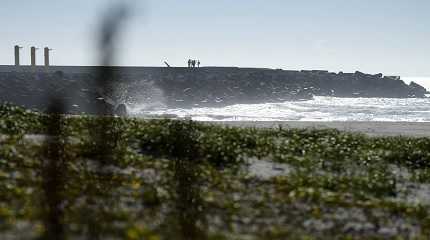
TOKYO, Nov. 2 (Xinhua) -- Japan on Thursday started the third round of release of nuclear-contaminated wastewater from the crippled Fukushima Daiichi Nuclear Power Plant into the Pacific Ocean.
Despite concerns and opposition among local fishermen in Fukushima Prefecture as well as other countries, Tokyo Electric Power Company (TEPCO), the plant's operator, started discharging the radioactive wastewater at around 10:20 a.m. local time.
As in the first and second rounds, conducted between August and October, TEPCO said that it will dilute some 7,800 tons of the radioactive wastewater, which still contains tritium, a radioactive substance, with a large amount of seawater before releasing it.
TEPCO said it plans to pump about 460 tons of water per day about 1 km off the coast via an underwater tunnel through Nov. 20.
The Chinese Embassy in Japan expressed firm opposition to the latest discharge. Japan's continuous dumping of nuclear-contaminated water poses serious risks to the global marine environment, a spokesperson for the embassy said.
The spokesperson called on Japan to fully respond to the concerns of the international community, subject itself to international oversight, and handle the nuclear-contaminated water in a science-based, open, transparent and safe manner.
Thursday's discharge is the third round of four to be conducted by the end of next March to discharge a total of about 31,200 tons of the water stored in tanks at the nuclear plant in Fukushima Prefecture, northeastern Japan.




